Themed collection Best Papers from 2018 in the Environmental Science Family of Journals

Best Papers from 2018 in the Environmental Science family of journals: great science with a global reach
The Editors-in-Chief of the Environmental Science journals introduce the Best Papers of 2018.

Environ. Sci.: Water Res. Technol., 2019,5, 629-630
https://doi.org/10.1039/C9EW90013F
Physiological modes of action across species and toxicants: the key to predictive ecotoxicology
We outline a research strategy that will deliver more effective theory and models for environmental risk assessment of chemicals.
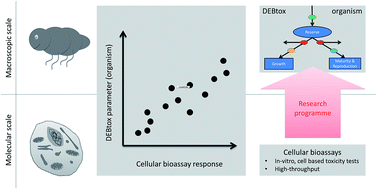
Environ. Sci.: Processes Impacts, 2018,20, 48-57
https://doi.org/10.1039/C7EM00328E
The effects and the potential mechanism of environmental transformation of metal nanoparticles on their toxicity in organisms
The influence of environmental transformation on the toxicity of metal nanoparticles and possible mechanisms are recapitulated and discussed.
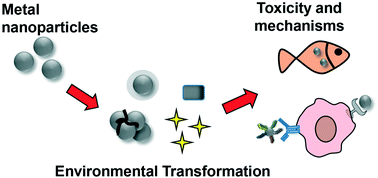
Environ. Sci.: Nano, 2018,5, 2482-2499
https://doi.org/10.1039/C8EN00688A
Emerging investigator series: the role of vegetation in bioretention for stormwater treatment in the built environment: pollutant removal, hydrologic function, and ancillary benefits
Bioretention vegetation contributes to both the hydrologic and pollutant removal functions of bioretention.
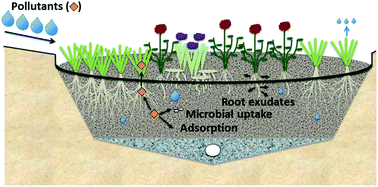
Environ. Sci.: Water Res. Technol., 2018,4, 592-612
https://doi.org/10.1039/C7EW00511C
Cyto- and geno-toxicity of 1,4-dioxane and its transformation products during ultraviolet-driven advanced oxidation processes
Ultraviolet-driven advanced oxidation processes (UV/AOPs) are integral steps in water reuse treatment trains.
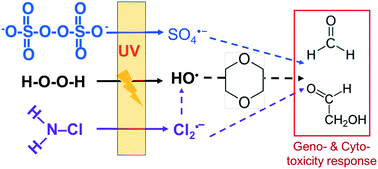
Environ. Sci.: Water Res. Technol., 2018,4, 1213-1218
https://doi.org/10.1039/C8EW00107C
Machine learning provides predictive analysis into silver nanoparticle protein corona formation from physicochemical properties
Proteins encountered in biological and environmental systems bind to engineered nanomaterials (ENMs) to form a protein corona (PC) that alters the surface chemistry, reactivity, and fate of the ENMs.
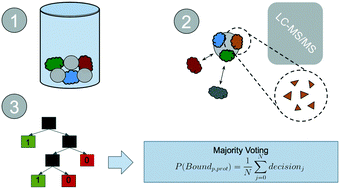
Environ. Sci.: Nano, 2018,5, 64-71
https://doi.org/10.1039/C7EN00466D
Urine-powered synergy of nutrient recovery and urine purification in a microbial electrochemical system
Energy in urine was extracted to synergize the in situ urine purification and nutrient recovery with net electricity production via a microbial electrochemical system named U-Power.
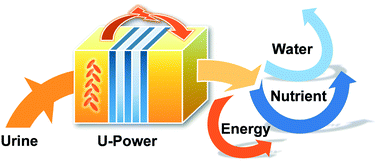
Environ. Sci.: Water Res. Technol., 2018,4, 1427-1438
https://doi.org/10.1039/C8EW00306H
Closing the gap between small and smaller: towards a framework to analyse nano- and microplastics in aqueous environmental samples
Environmental nanoplastic concentrations are fairly unknown, to tackle this we propose a framework determining a broad size spectrum of plastics.
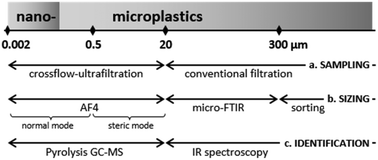
Environ. Sci.: Nano, 2018,5, 1640-1649
https://doi.org/10.1039/C8EN00186C
Temporal trends of halogenated flame retardants in the atmosphere of the Canadian Great Lakes Basin (2005–2014)
Temporal and spatial trends of total air concentrations (gas + particle) of halogenated flame retardants at the Canadian Great Lakes Basin were assessed (2005–2014).
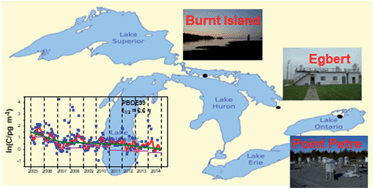
Environ. Sci.: Processes Impacts, 2018,20, 469-479
https://doi.org/10.1039/C7EM00549K
Exploring the hydraulic fracturing parameter space: a novel high-pressure, high-throughput reactor system for investigating subsurface chemical transformations
Hydraulic fracturing coupled with horizontal drilling (HDHF) involves the deep-well injection of a fracturing fluid composed of diverse and numerous chemical additives designed to facilitate the release and collection of natural gas from shale plays.
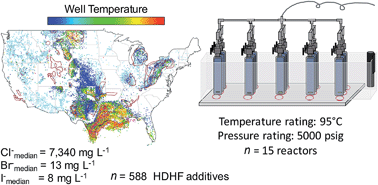
Environ. Sci.: Processes Impacts, 2018,20, 318-331
https://doi.org/10.1039/C7EM00470B
About this collection
During 2018, the Royal Society of Chemistry’s Environmental Science family of journals (Environmental Science: Processes & Impacts; Environmental Science: Nano; Environmental Science: Water Research & Technology) published over 550 papers. With subject matter ranging from atmospheric pollutant transport to urine purification for resource recovery, and further to the environmental impacts of nanoplastics, the journals are home to a diverse set of outstanding work. This year, to try and highlight some of the incredible science being published in our journals, we are delighted to introduce the Environmental Science Best Papers from 2018. These Best Papers were selected after evaluation by the journals’ Editorial and Advisory Board members. The Editors-in-Chief for the journals (Kris McNeill, Peter Vikesland and Paige Novak) introduce this initiative and the winning papers in their Editorial.
Overall Best Paper
Korin Wheeler et al, Environ. Sci.: Nano, 2018, 5, 64-71
Journal Best Papers
Environmental Science: Nano
Best Paper: Machine learning provides predictive analysis into silver nanoparticle protein corona formation from physicochemical properties Korin Wheeler et al
Runner-up Best Paper: Closing the gap between small and smaller: towards a framework to analyse nano- and microplastics in aqueous environmental samples S. M. Mintenig et al
Best Review Paper: The effects and the potential mechanism of environmental transformation of metal nanoparticles on their toxicity in organisms Sijin Liu et al
Environmental Science: Processes & Impacts
Best Paper: Exploring the hydraulic fracturing parameter space: a novel high-pressure, high-throughput reactor system for investigating subsurface chemical transformations Desiree Plata et al
Runner-up Best Paper: Temporal trends of halogenated flame retardants in the atmosphere of the Canadian Great Lakes Basin (2005–2014) Hayley Hung et al
Best Review Paper: Physiological modes of action across species and toxicants: the key to predictive ecotoxicology Roman Ashauer et al
Environmental Science: Water Research & Technology
Best Paper: Urine-powered synergy of nutrient recovery and urine purification in a microbial electrochemical system Xia Huang et al
Runner-up Best Paper: Cyto- and geno-toxicity of 1,4-dioxane and its transformation products during ultraviolet-driven advanced oxidation processes Haizhou Liu et al
Best Review Paper: Emerging investigator series: the role of vegetation in bioretention for stormwater treatment in the built environment: pollutant removal, hydrologic function, and ancillary benefits Gregory LeFevre et al
The journals’ Editorial and Advisory Boards who selected these winning papers were faced with many difficult choices. So, to celebrate more of the great papers published in the journals during 2018, we’ve gathered all nominated papers in the collections below.
Environmental Science: Processes & Impacts: Best Paper Nominees
Environmental Science: Nano: Best Paper Nominees
Environmental Science: Water Research & Technology: Best Paper Nominees